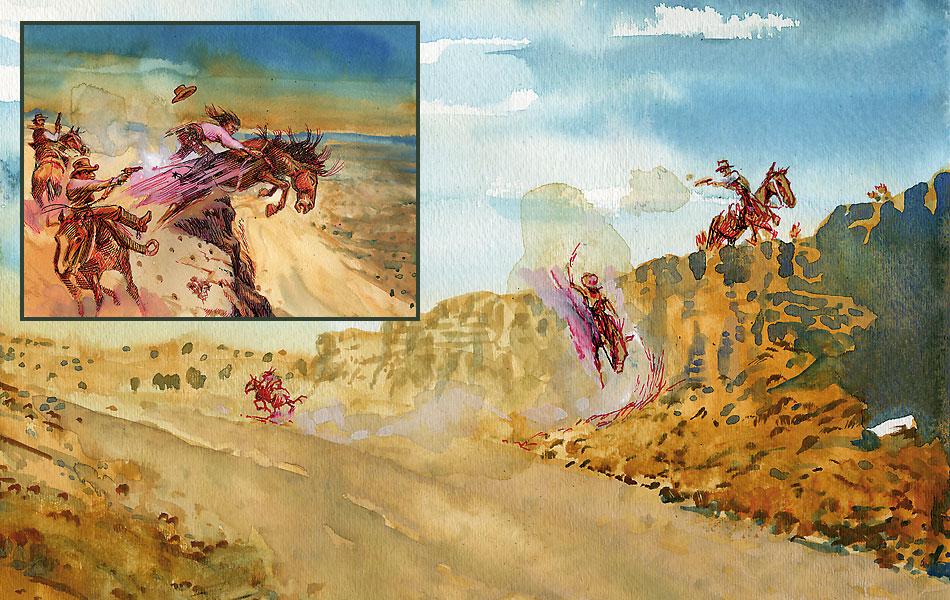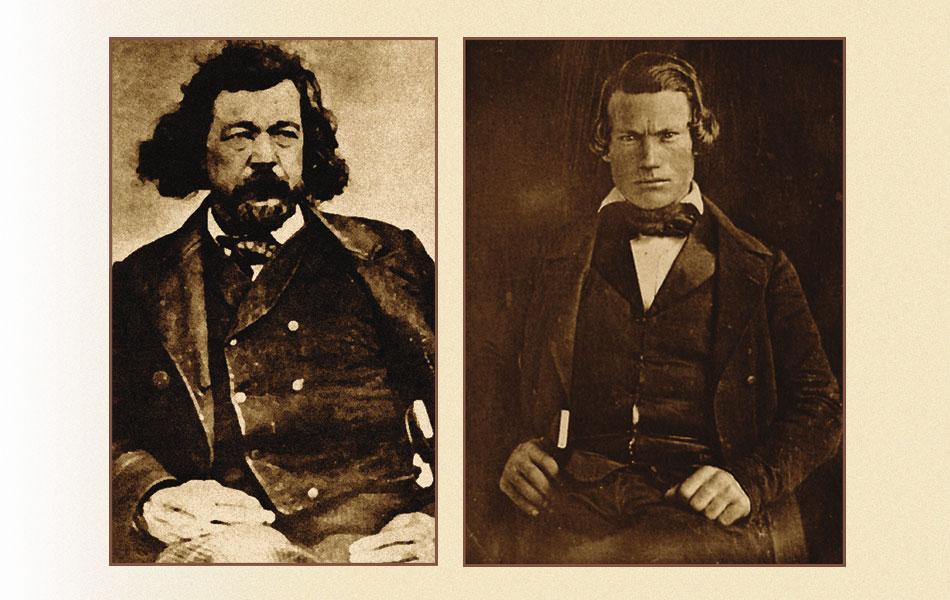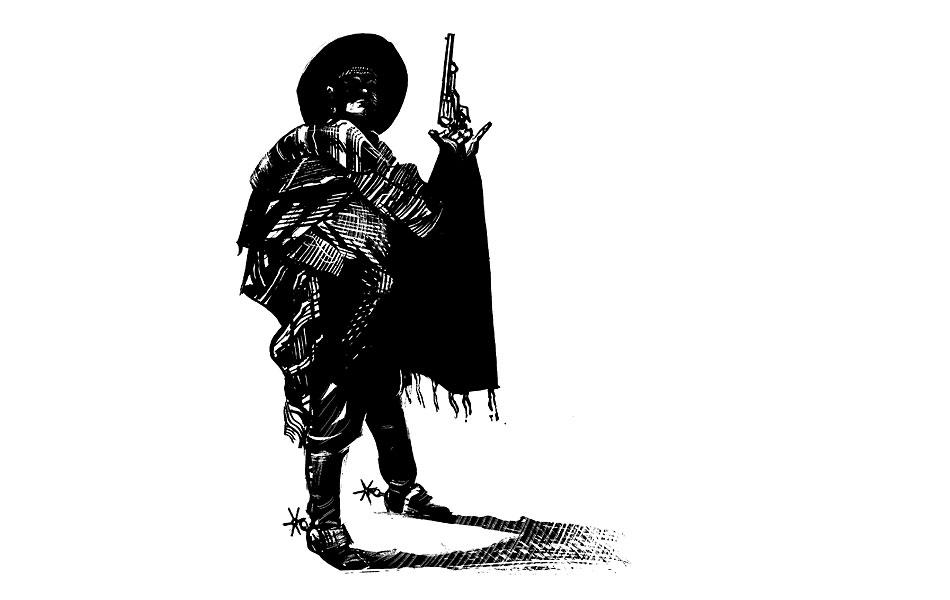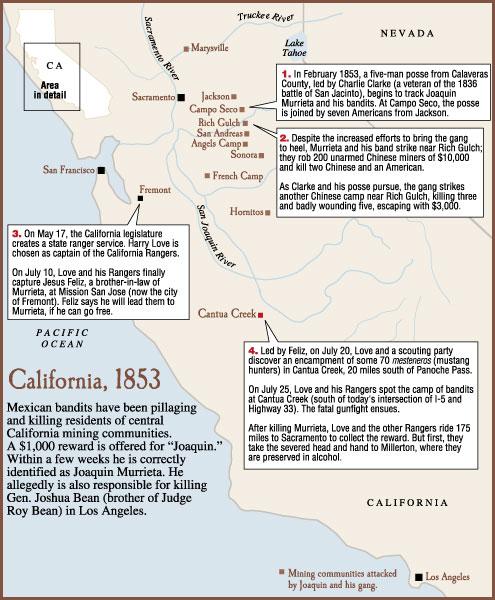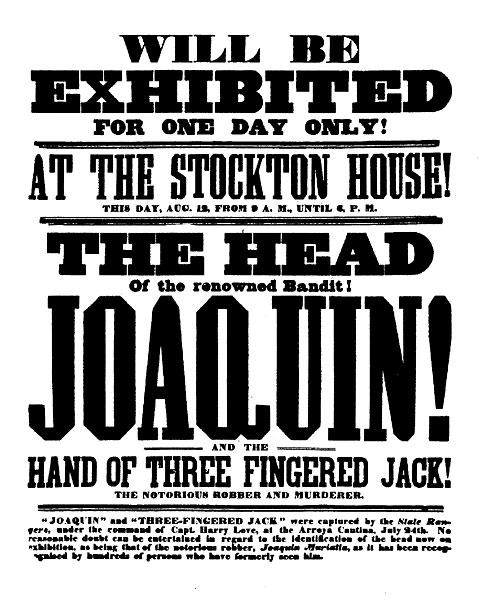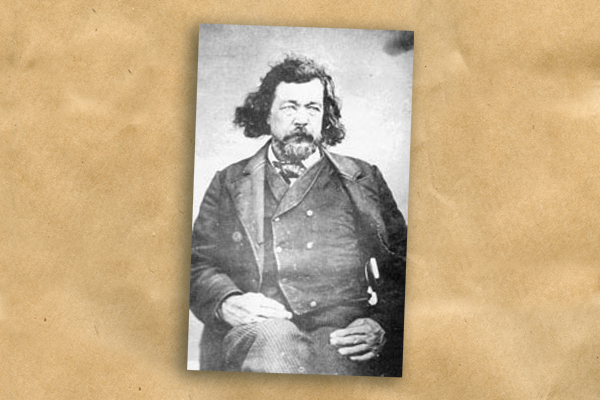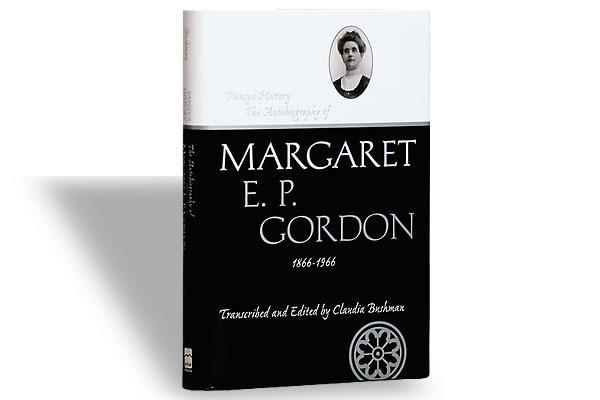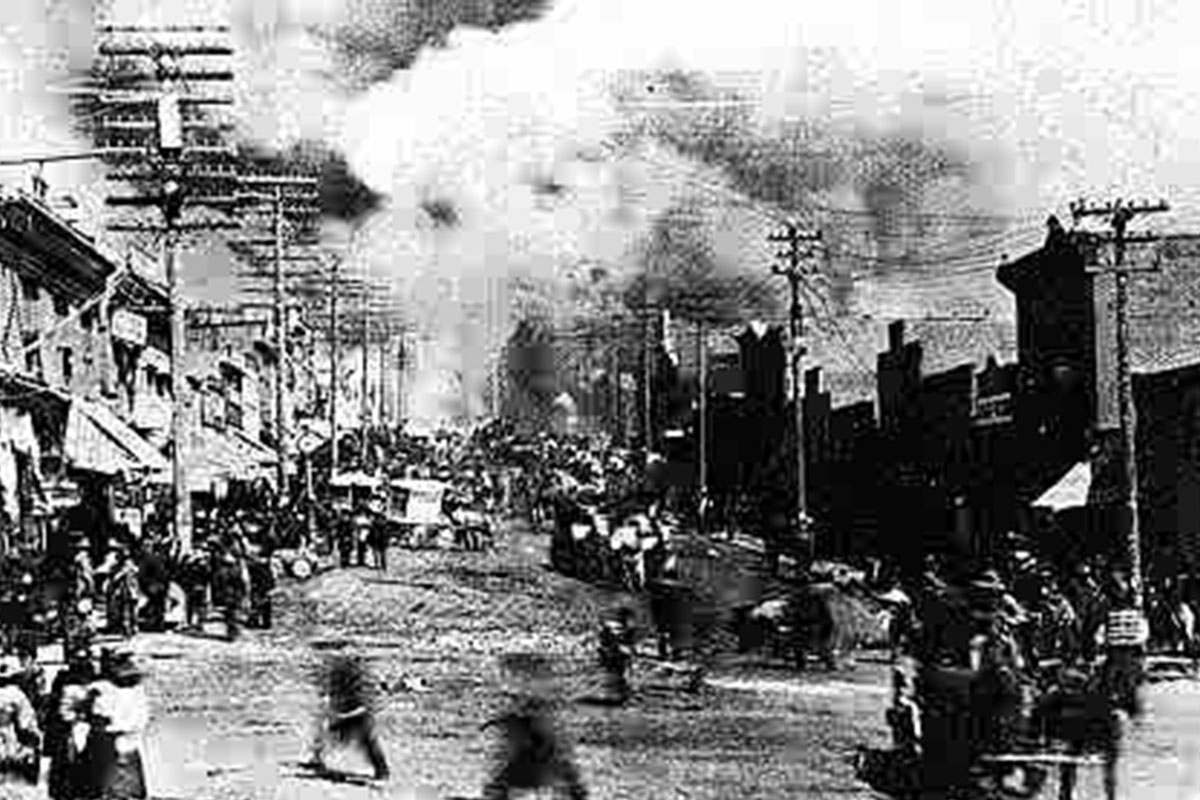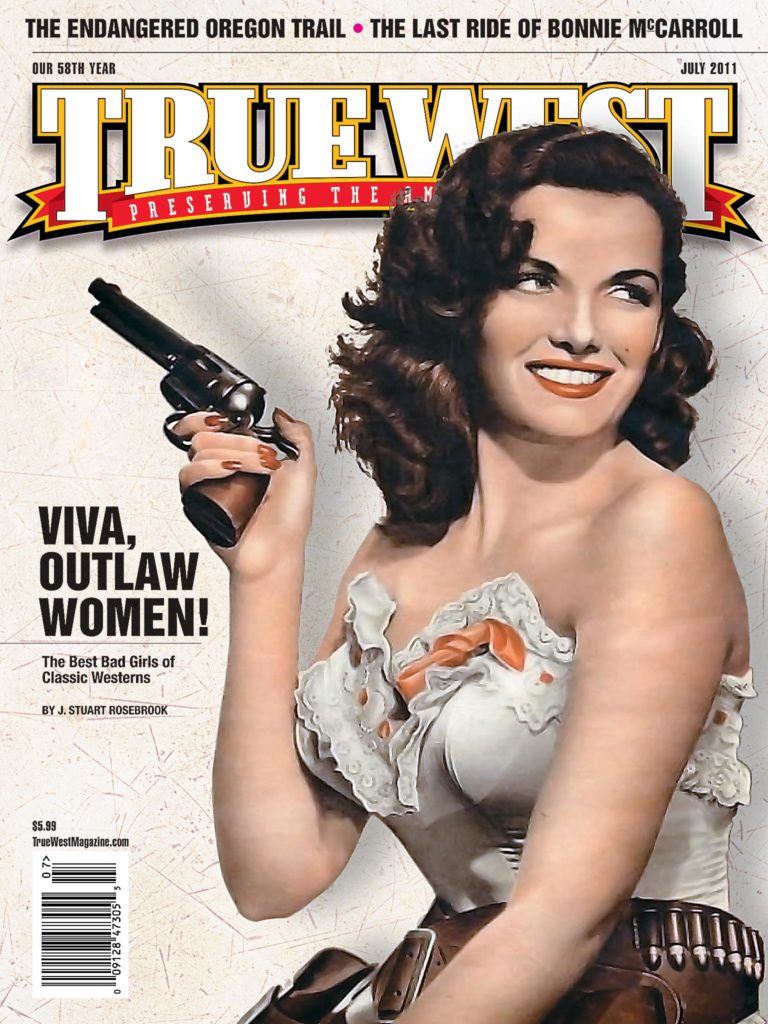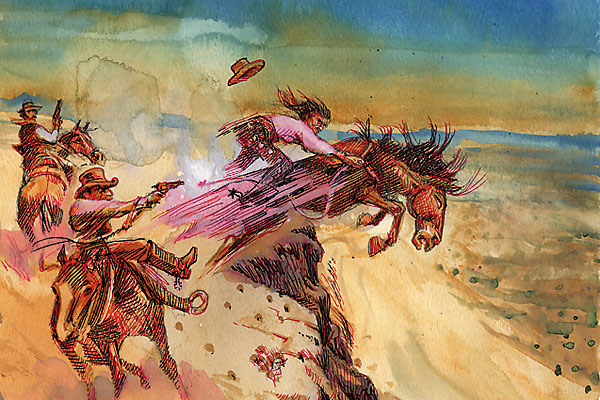
July 25, 1853
Saddling up at 2 a.m. Harry Love and his fellow California Rangers ride out of their rugged mountain camp and make their way to Cantua Creek in central California. They have been on the trail of Joaquin Murrieta for more than two months.
By daybreak they reach the spot where the creek enters the San Joaquin Valley. The Rangers spot the smoke of a campfire on the plains three miles in the distance.
Spurring their mounts, the Rangers approach within 400 yards. The camp comes alive as Love and his men gallop in and demand at gunpoint that the Mexicans stop in their tracks.
A handsome, long-haired native steps forward and says, “Talk to me. I am the leader of this band.”
One of the Rangers, Bill Byrnes, recognizes the bandit leader immediately: “This is Joaquin, boys! We have got him at last!”
At this pronouncement, the assembled gang members fling open their serapes, whip out their pistols and blaze away.
A three-fingered desperado fires two shots at Love, parting the Ranger’s hair. Nine shots from the Rangers rip into the shooter, and he crumples to the ground.
Joaquin Murrieta leaps onto a horse bareback and jumps the horse down a 15-foot embankment into the creek bed. Ranger William Henderson fires at Murrieta with his shotgun, then spurs his horse down the embankment in pursuit. Henderson yanks his six-shooter and fires twice, hitting Murrieta’s horse in the foot and then the leg, dropping the mount. Murrieta jumps free and flees on foot down the arroyo bed.
Ranger John White gallops along the embankment, above the arroyo, firing his rifle. Thirty yards from Murrieta, one ball from White’s rifle and two balls from Henderson’s pistol hit the outlaw leader in the back; Murrieta plunges headfirst into the wash.
“No tire mas. Yo soy muerte,” were Murrieta’s last words (“Don’t shoot anymore, I’m dead”).
Aftermath: Odds & Ends
Four of the outlaws, including Bernardino Garcia (alias Three-Fingered Jack), were slain. Joaquin Murrieta’s head was cut off (as was Garcia’s hand) and packed in whiskey until the posse could reach Sacramento, California, and claim the $1,000 reward.
***
Harry Love exhibited Murrieta’s head for $1 a view (see poster) in the central California mining camps where Murrieta was
well-known. Dr. Louis Jordan’s San Francisco museum acquired the “trophy.” It spent 30 years in the museum before being destroyed in the 1906 earthquake and fire.
***
With his reward money, Love bought a large tract of land near Santa Cruz and married a neighbor Mary Bennett in 1854. But they had a rough marriage, and she left him in 1866. In debt, Love confronted Mary on June 29, 1868, and was shot by a handyman working for Mary. Love died of complications from the wound and a botched operation.
***
From the very beginning some refused to believe Murrieta had been killed. In the 1950s and ’60s this refrain gained credence when several authors maintained Joaquin Murrieta never existed and that Ranger Love faked the entire episode; they claimed he used some poor Indian’s cabeza as a float-in. Yet research by authors William Secrest and John Boessenecker has convincingly proven otherwise; too many eyewitnesses who knew Murrieta in the mining camps had also testified the head of the infamous bandido was, in fact, in the jar.
***
Recommended: Gold Dust & Gunsmoke by John Boessenecker, published by John Wiley & Sons. The Man from the Rio Grande by William Secrest, published by Arthur H. Clark Company.
Photo Gallery
– Captain Love: Courtesy Wells Fargo Bank; William Henderson: True West Archives –
Usually armed to the teeth, Joaquin Murrieta was unarmed at the time of his death.
– Illustrations by Bob Boze Bell –


